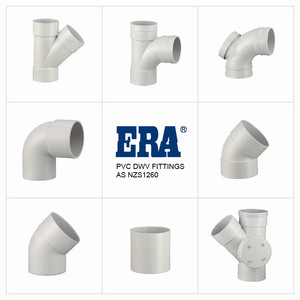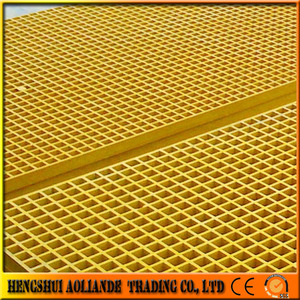(481 products available)




























































































































































Ventilation is an important aspect of any home. Vents allow air to flow freely in and out of the house. They come in different types and are made up of various materials. Vents are made up of metal, plastic, wood, or a combination of these. The type of material used to make the vents also varies according to the purpose they serve. Some vents are designed for heating, and others are designed for cooling. There are also multi-purpose vents that can be used for both heating and cooling.
Vents can also be categorized based on where they are installed. For example, floor grates are installed on the floor, while wall vents are installed on the wall. Roof vents are installed on the roof and have a rotating mechanism that allows them to spin and regulate airflow. Some vents are designed to be installed in doors, and others are installed in windows. Some are mounted on the ceiling and are known as ceiling vents.
Vents can also be categorized based on the pattern the grill design follows. Some have a linear grill design, while others have a square or round grill design.
Grates, on the other hand, are made of metal and are used to cover the vents. Grates are designed to protect the vents from dirt, insects, and other things that can enter the house. There are different types of vent grates, including the following:
Ventilation is the most important reason for grates. Vents grates let fresh air into a room and get rid of stale air. This is important for keeping indoor air clean and healthy. It is also important for avoiding the buildup of damaging moisture and gases caused by cooking, heating, and other household activities. Adequate ventilation is also important for avoiding the buildup of dampness, which can lead to the growth of mildew and mold, which can be harmful to health. HVAC register vents allow air to flow freely, which helps to keep indoor areas a comfortable temperature. This is especially important in warm climates, where good airflow is needed to prevent rooms from becoming too hot and stuffy. Vents grates also help to reduce the need for artificial cooling, which can save money and benefit the environment.
Vents grates help to control indoor temperatures. Homeowners can use adjustable vents to cool or heat a room. In warm weather, they can open the vents to let in cool air. In colder weather, they can close the vents to keep the heat inside. This is important for making indoor areas a comfortable temperature all year long. It also helps to lower energy bills by reducing the need for artificial heating and cooling.
Vent covers are also useful for purposes of aesthetics. While the primary function of a vent grate is to allow air to flow in and out of a space, it can also serve as a decorative accent. Homeowners may select vent covers that complement the style of the room. Some vent covers have intricate designs or patterns that add visual interest to the space. The placement of the vent cover can also impact the overall look of the room. For example, a floor air vent grill in the center of a room may be made into a design element, while a ceiling vent cover may be used to create a seamless look. With so many styles to choose from, vent covers can be an important part of a room's decor.
Ventilation grates are widely used in various industries and applications. Here are some common usage scenarios:
Vent grates are widely used in industrial and commercial buildings for air circulation. They are installed in HVAC air register systems to regulate airflow and maintain proper air quality. Vents are also found in industrial processes to remove heat, fumes, and other airborne contaminants.
Vent grates are installed in residential buildings to allow fresh air to circulate and regulate the temperature. They are commonly used in kitchens, bathrooms, and laundry rooms to remove moisture, odors, and pollutants. Vents are also installed in attics and crawl spaces to prevent moisture buildup and maintain proper ventilation.
In the automotive industry, air vents are installed in vehicles to allow air to flow through the HVAC system. They help regulate the temperature inside the vehicle and provide fresh air to the occupants. Vents are commonly found on the dashboard, doors, and back seats of cars, trucks, and other vehicles.
Vent grates are used in various appliances to allow air to circulate and prevent overheating. For example, they are installed on refrigerators, freezers, and air conditioners to release hot air from the condenser. Vents are also found on ovens, microwaves, and dishwashers to release steam and heat during operation.
Vent grates are installed in data centers to regulate airflow and prevent overheating of servers and other electronic equipment. They are commonly used in raised floors and ceiling tiles to direct cool air to the equipment. Vents help maintain the proper temperature and humidity levels to ensure the efficient operation of the data center.
Vent grates are used in greenhouses to provide ventilation and control the temperature and humidity levels. They allow fresh air to circulate and prevent the buildup of heat and moisture, which can cause plant diseases. Vents in greenhouses help create an ideal growing environment for plants.
Vent grates are installed on boats and ships to provide ventilation and regulate the temperature inside the cabins and engine rooms. They allow fresh air to circulate and prevent the buildup of heat and moisture, especially in enclosed spaces. Vents in boats and ships help maintain a comfortable and safe environment for passengers and crew members.
Choosing the right vents and grates for sale involves considering several factors. Here are some of them:
When choosing vent grates, consider the material used to manufacture them. The material should be durable to ensure that the grates will last for a long time. Also, check if the material can withstand wear and tear from heavy use and traffic. This is important to ensure that the vent grates will maintain their structural integrity and shape. Some of the materials used to manufacture vent grates are steel, aluminum, and plastic. Aluminum is a popular material that is known for its light weight and corrosion resistance properties. Vendors should stock different types of vent grates made from various materials. This will allow different customers to get their preferred options. It is important to provide accurate information about the type of material used to manufacture the vent grates. This will help buyers to make informed decisions.
There are different styles and designs of vent grates in the market. Each design is intended to be used in specific areas. For instance, some vent grates come with decorative elements. Such options are used in areas that require an aesthetic appeal. They include return air grills and custom vent grates. Business owners should stock a variety of styles and designs of vent grates. This will allow customers to get products that will complement their existing décor. It will also enable them to get the vent grates that will meet their functional needs.
Depending on the area of installation, these vent grates can be available in different sizes and shapes. Vendors should stock a variety of sizes and shapes of vent grates. This will enable buyers to get the options that are compatible with their floors and air ducts. It is important to get vent grates that are slightly larger than the vent opening. This will ensure that the vent grates will be secure and not fall off.
Q1: What is the importance of the floor registers?
A1: The register is an essential component of the heating, ventilation, and air conditioning (HVAC) system. It allows the flow of air into rooms, preventing the buildup of stale air. At the same time, it enables the flow of cooled or heated air into the rooms.
Q2: What are the common materials of the floor register?
A2: Many registers are made from steel because of its durability and heat resistance. Other materials include aluminum, which is lightweight, and wood, which is often used for decorative purposes and is known to dampen sound.
Q3: What is the proper way to measure a floor register?
A3: To get an accurate measurement of the floor register, measure the width and length of the duct opening. Do not measure the existing register. Instead, measure the duct opening where the existing register sits. The measurements will be shown in inches, making it easier to find the right size replacement register.
Q4: What is the difference between the floor register and floor grates?
A4: While the terms are used interchangeably, they do refer to different things. A grate is a cover that allows air to pass through, while a register has louvers that can be moved to control airflow. A grate is used for return air grills, while a register is used for supply air.
Q5: How to select the right sized floor register?
A5: To select the right floor register, measure the size of the duct opening. Then, choose a register that is 2 to 4 inches more significant than the opening. Floor registers need to be larger than the opening to fit properly. An incorrectly sized floor register can lead to a poor aesthetic appearance and impact the efficiency of the HVAC system.